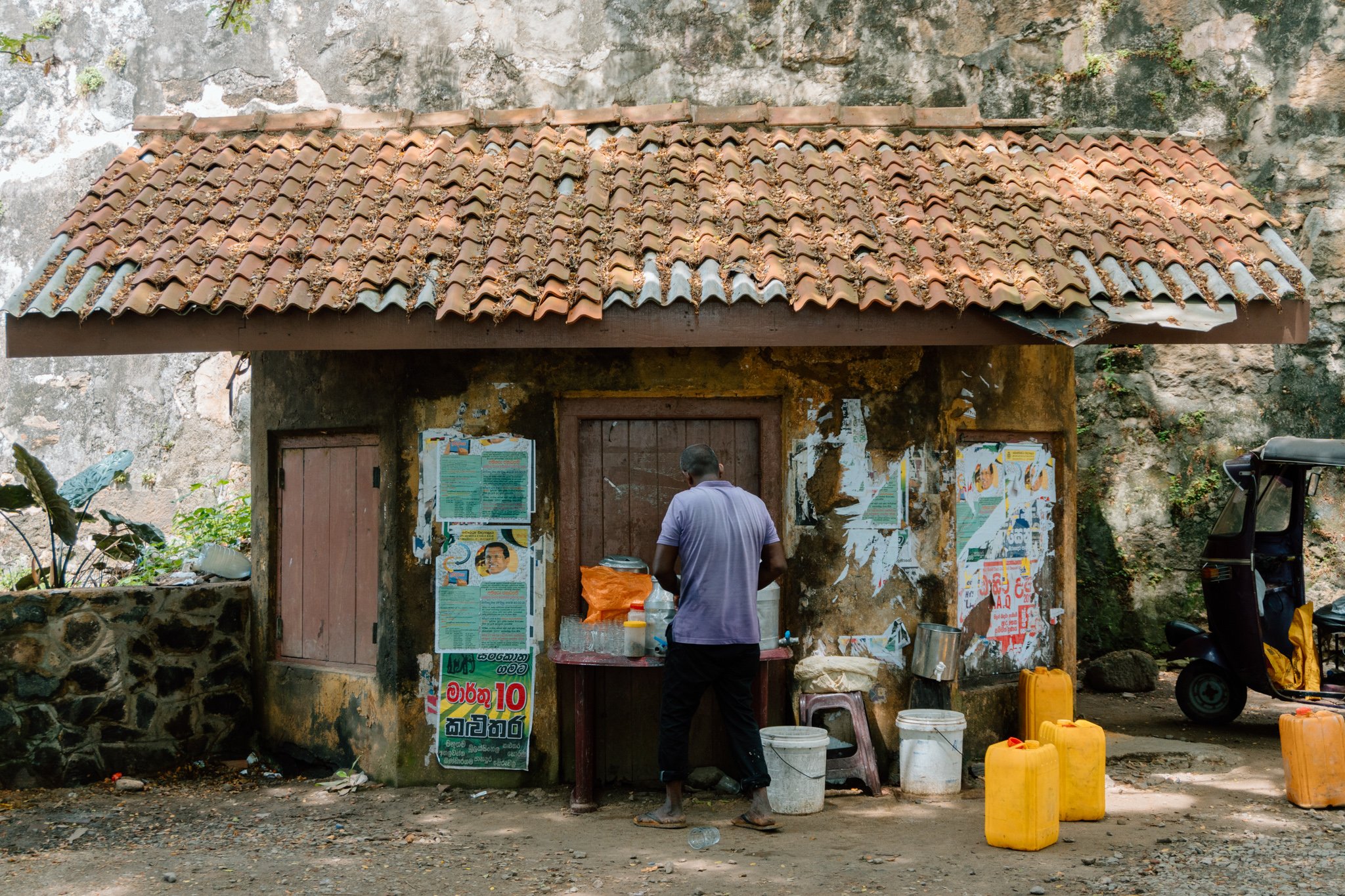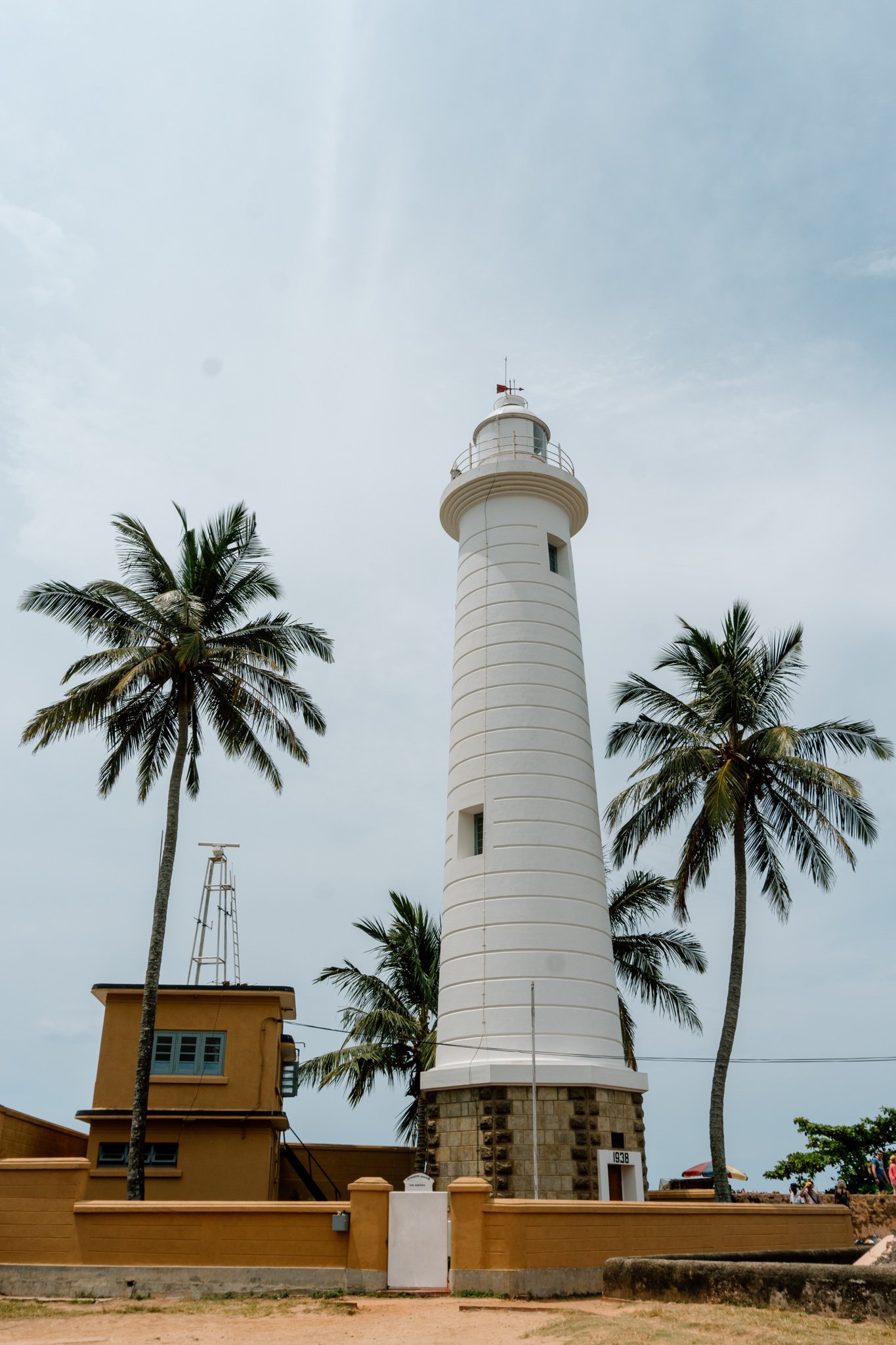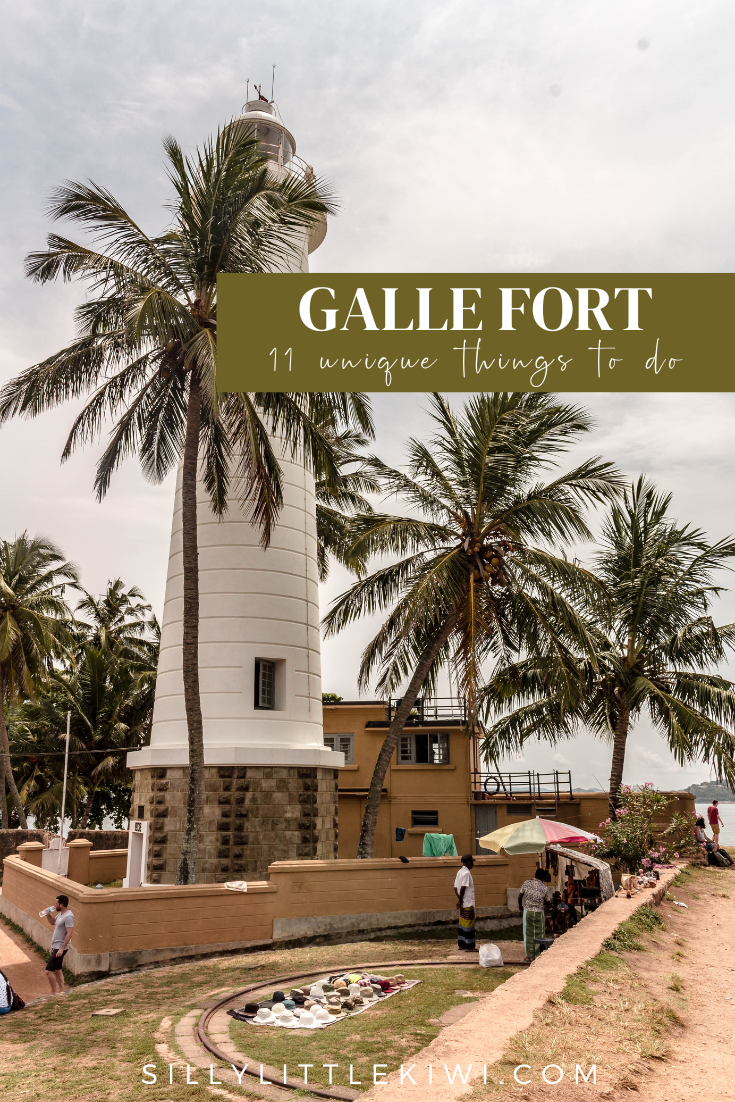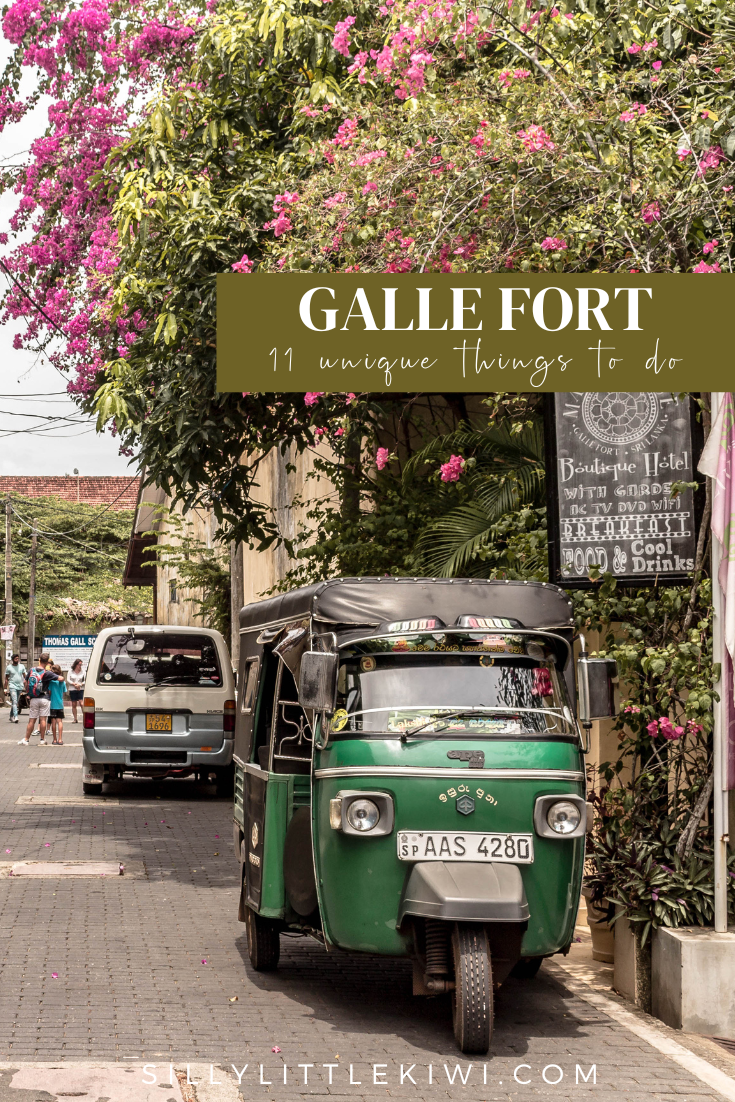13 Best Things to Do in Galle, Sri Lanka: Everything You Need to Know (updated for 2024)
This guide is filled with everything you need to know before visiting Galle, a southern cultural hub on Sri Lanka’s coast. From where to eat, where to stay, and 13 of the best things to do, this article covers it all so that you can plan your perfect trip to Galle.
We spent part of our month-long adventure across Sri Lanka exploring Galle, and it might have been the place that surprised us the most. Galle is a beautiful cultural hub in southern Sri Lanka steeped in history, and there are so many things to do in this small colonial town. The architecture reflects its history of over 200 years of spice trading, and the remnants of this colonial history are noticeable at every turn. Set along the coast and made up of crooked alleyways, the tropical Galle Fort is a melting pot of past and present influences. The city is well worth visiting— whether for a day, a weekend, or a week.
While Galle is only 130 square acres, there’s no shortage of things to do! Filling your days with cricket games, delicious eateries, and historical walls to walk around, you will have plenty to keep you busy on a visit to Galle. The fort town has become increasingly gentrified as a hub of hostels, boutique shopping, and cuté cafes. It’s a town where the local Sri Lankans mix with expats and tourists, giving it an unusual atmospheric blend of modern-meets-tradition.
Adding this UNESCO World Heritage Site to your Sri Lankan itinerary is a must, and this guide will show you exactly what to do. Read on for the best things to do in Galle, as well as where to stay, and where to eat while you’re there!
best time to visit Galle ↴
The absolute best time of year to visit Galle is between December and April (dry season). During this period of time, rainfall is low but you can expect heat. We visited in April and it was definitely hot but we managed to miss monsoon season in Southwest Sri Lanka, where Galle is located, which tends to run from May to September. Avoid visiting Galle in early January, as Sri Lankan holidays will have the fort town bursting with people. Temperatures in Galle tend to hover between 25°C - 30°C all year round, so no matter when you visit, you can expect heat.
Monsoon season | May through September
Dry season | December through April
how to get to Galle ↴
Galle is an easy day trip for Mirissa and makes for an easy afternoon getaway from Unawatuna. There are both train and bus options. The bus is the cheapest option (not that the train is expensive) and once you get the hang of it, you’ll want to use it as your main source of transportation around the island (except for the trip from Kandy to Ella, you’ll definitely want to train that journey).
Make sure you catch the bus from the correct side of the road. Bus stops are on Google Maps. Look for the closest bus stop on the app (there is typically a blue sign for bus stops, but this isn’t always the case). Wait at the stop until a bus comes by with “Galle” on the window. You’ll need to be quick! Buses don’t pause for long. Bus fare at the time of publishing was LKR 15 per person.
For train timetables, check the official website here.
how long to spend in Galle ↴
Most of the things to do on this list can be done in 1-2 days, and that’s how long I’d recommend staying. Galle makes a lovely day trip from Unawatuna, which is how we visited. You can also book a full-day tour around Galle if you would like historical and cultural commentary. Spending a couple of days in Galle will give you more time to catch a cricket game or jump on a half-day bike tour with Ides Bikes.
However, you could definitely spend up to 5 days in Galle wandering its many alleyways and cobblestone streets. The leisurely pace, local history, and beautiful setting are what make Galle a great addition to your Sri Lanka itinerary, so don’t rush it. It’s also worth noting that it is relatively close to Hiriketiya, Mirissa, and Colombo, so you could base yourself in Galle for day trips to these areas.
where to stay in Galle ↴
Galle is undeniably touristy, but there is plenty to do and it’s well-located in southern Sri Lanka, which is why it makes a good base for travelers. There are luxury hotels and value stays that make Galle suitable for all budgets and travel preferences.
Here are a few places I recommend staying in Galle:
The Heritage Hotel | 5-star stay that’s centrally-located, with elegantly decorated air-conditioned rooms and a large courtyard area
Mango House | great value for money, spacious Dutch colonial house-turned-hotel
The Fort Printers | a sophisticated 18th-century mansion, restored into a boutique hotel within the fort walls boasting heritage antiques and minimalist design interiors
Secret Garden Galle Fort | 3-star stay in the center of Galle with a fantastic breakfast buffet
We love using Booking.com to book the best places to stay around the world.
where to eat in Galle ↴
The best food we had in Galle was from the nameless street food stalls we stumbled upon along the fort walls. Over the years, I’ve found that it’s nearly always the unnamed food carts you wander past that serve the most flavourful local cuisine. However, there are a number of delicious eateries in Galle that serve up drool-worthy dishes.
local food to eat in Galle:
Kottu | shredded roti stir-fried with vegetables, spices, egg, and sometimes chicken
Wade (also known as Dhal vade) | lentil fritters made with chilies, onions, and ginger, often served with mango chutney
Roti | rustic flatbread, traditionally made with flour, grated coconut, green chilies, and onions
where to eat in Galle:
Hoppa | a new restaurant in Galle Fort with limited seating that specializes in (as its name suggests) traditional Sri Lankan hoppers (a thin pancakes shaped like a bowl, fried with an egg)
Tequila Mockingbird | quirky interiors match its innovative menu that includes mouthwatering curries and creative cocktails
A Minute By Tuk Tuk | eatery overlooking Galle Bay, specializing in spicy Sri Lankan curries and tuna burgers made of locally-sourced tuna
Isle of Gelato | the very best ice cream in Galle
Withered Leaves | fantastic tea street food stall
a brief history of Galle ↴
Galle’s history is one of long-standing British, Dutch, and Portuguese occupation. Despite Galle Fort commonly being called the “Dutch Fort”, it was first built in 1588 by the Portuguese. It wasn’t until years later that it was fortified by the Dutch. The fort existed to prevent attacks from colonial competitors. To this day, you can still see battle ramparts along the fort’s wall. While it was under the rule of the Dutch, 500 families lived inside, which explains the many churches and homes that remain from that era. You can see heaps of Portuguese and Dutch influence reflected in everything from the buildings and colonial churches to the cobblestone streets.
The city of Galle was “handed over” to the British in 1796 and they made a number of changes to the city, the most recognizable of which is the tower that you can see from various points in town. Galle was a busy trading port, conducting business with the likes of Greece, Arabia and China.
UNESCO has recognized the fort as a World Heritage Site. According to UNESCO, the site meets the category 4 criteria for being a World Heritage site due to its “unique exposition of an urban ensemble which illustrates the interaction of European architecture and South Asian traditions from the 16th to the 19th centuries.”
13 best things to do in Galle ↴
take a bike tour
If you’re looking for an outdoor adventure and an introduction to the city, Idle Bikes tours is a locally owned and operated company, making it a fantastic business to support. Idle Bikes’ tour guides are all first-aid certified and provide excellent insight into the sights of Galle and its surroundings. Tours start at USD $20 and vary in duration depending on which tour you book. The classic ride tour option is a gentle loop starting at Wijaya Beach, passing through Eluvila Bird Sanctuary and rice paddy fields.
COST | bike tours start at USD $20 per person
take a cooking class
Taking a Lucky Fort Cooking Class (also called Lucky Mama’s) while visiting Galle is a great way to learn about more about Sri Lankan culture and its food. The cooking class takes place inside a local Sri Lankan family’s home, where the matriarch of the family teaches you the step-by-step process of cooking local dishes and how she uses a mix of ingredients found in her garden and sourced locally. You’ll finish the class sat down at a communal table, devouring the aromatic feast you’ve worked to cook, including seafood curry. You can book your cooking class at Lucky Mama’s via WhatsApp or messaging their Facebook page.
try traditional stilt fishing
As a port city, fishing is a large part of Galle’s economy and wider culture. Outside of the fort, you’ll likely spot Sri Lankan fishing boats and “stilt fishermen” using traditional Sri Lankan fishing methods. Stilt fishing, though a traditional technique, is not terribly efficient. Actually, since the 2004 tsunami, the fishing in Galle hasn’t been all that good no matter the technique used. Because of this, the stilt fishermen you see on the water are usually “performing” for tourists. While it’s no longer the most authentic experience, trying traditional stilt fishing is a way to help keep this custom alive. You can photograph the fishermen, sit and observe them, or give it a try for yourself. Be sure you negotiate a price with the fishermen and remember that this is their livelihood.
COST | negotiated
grab specialty Sri Lankan coffee at Heritage Café
temporarily closed
Well-decorated with copper finishing, Heritage Café is beautifully housed in a 400+-year-old heritage building. The coffee at Heritage is organic, single-estate Sri Lankan coffee and the café itself is committed to eliminating single-use plastics.
explore historical + cultural sites
My favorite part of our time in Galle Fort was hiding from the formidable sun in pockets of shade throughout the narrow lanes inside the Portuguese and Dutch colonial fort walls.
Some sights and attractions we suggest you visit are:
Dutch Reform Church | Dutch church dating back to the 1600s
All Saints Anglican Church | built from solid rock in the late 1800s
Old Dutch Hospital | former 18th-century hospital
Sudharmalaya Temple | white Buddhist temple
Amangalla | a luxury hotel that was once the Dutch Governor’s home
Meeran Mosque | beautiful mosque, built in 1904
catch a cricket game
While strolling around the city, I stumbled upon a cricket match. And, guys, something about cricket still gets me all giddy inside. Not only is the stadium in Galle considered to be one of the most beautiful cricket grounds in the world, but it’s also considered to be one of the luckiest for the Sri Lankan national team. Cricket was originally introduced to Sri Lanka by British colonialists when it was still the island nation of Ceylon in the 19th century. It’s believed that the first cricket match in Sri Lanka was played in 1832!
stroll the ramparts
Galle Fort is surrounded by thick ramparts (defensive walls). The Galle Fort walls were originally built by the Portuguese in the 16th century during their conquest of Sri Lanka (then Ceylon). The ramparts were later fortified by Dutch merchants in the 17th century. The ramparts are thick enough to walk along, and if you follow them you’ll come across the old Galle Fort prison, the ocean, and the fort’s clock tower.
ADMISSION | free
Galle lighthouse
The white lighthouse that sits on the ocean’s edge in Galle Fort is the oldest lighthouse in Sri Lanka. Originally, the British built a similar lighthouse in a different location, but after it was destroyed in a fire. Later, the lighthouse that exists today was built. The lighthouse today is a symbol of Galle and a nod to its days of being a major port town in Sri Lanka. It’s free to catch glimpses of the lighthouse, and it takes less than 5 minutes to walk around and grab photos.
ADMISSION | free
peep the houses of worship around town
Mosques, cathedrals, temples, and churches pepper Galle. This is a testament to how culturally diverse the country is; something I loved about Sri Lanka. Many of the holy houses in Galle are free and open to the public, but please make sure you’ve dressed appropriately (no bikinis).
ADMISSION | free
escape the heat in a café
There’s no shortage of cafés in Galle. My favourite that we visited during the peak heat of the day was Summer Green Chinese Restaurant + Cafe. Though not exactly cultural at all {apart from a few Sri Lankan dishes on offer}, it is a very aesthetically pleasing café that serves delicious iced tea. Also, funnily enough, no Chinese food on the menu.
grab affordable local eats
Sri Lankan cuisine is some of my favorite food I’ve had around the world. Especially since I love spicy food. I love dhal and curries and rotis. After a refreshing drink from Summer Green, we hit up a local “bakery” selling newspapers and rotis. My travel companion and I grabbed some vegetarian rotis and the total for three came to 90 LKR. It’s not only a cheap lunch but a delicious one. Expect spicy roti, delicious wade, and scrumptious hoppers.
shop the many boutiques
You’ll find everything from tea and spices to beautiful textiles and vintage postcards. Shops like Stick No Bills were some of my favorite little boutiques and I picked out quite a few souvenirs to send to friends and family here. If this is one of your last stops in Sri Lanka, it’s a great place to grab postcards to send off at the airport!
My favorite shops in Galle include:
Stick No Bills | incredible vintage prints + posters
Exotic Roots | handicrafts + artwork
KK Boutique | A beautiful expansive shop for everything homeware.
day trip to Handunugoda Tea Estate
Handunugoda Tea Estate is one of a few tea plantations in the southern part of Sri Lanka. If you have an extra day in Galle, I highly recommend taking a day tour of the tea plantation where you can sample famed Sri Lankan tea accompanied by cake in the old planters’ bungalows. The best part, in my opinion, besides copious amounts of tea, is the view overlooking the tea terraces below the tea factory. The tea produced at Handunugoda is of the highest quality and even produces a signature cinnamon and vanilla blend. The tea estate is working on innovative solutions to continue growing tea and providing jobs to tea planters in the face of the current climate crisis.
map ↴
Find all the best things to do in Galle, Sri Lanka on the map below.






















